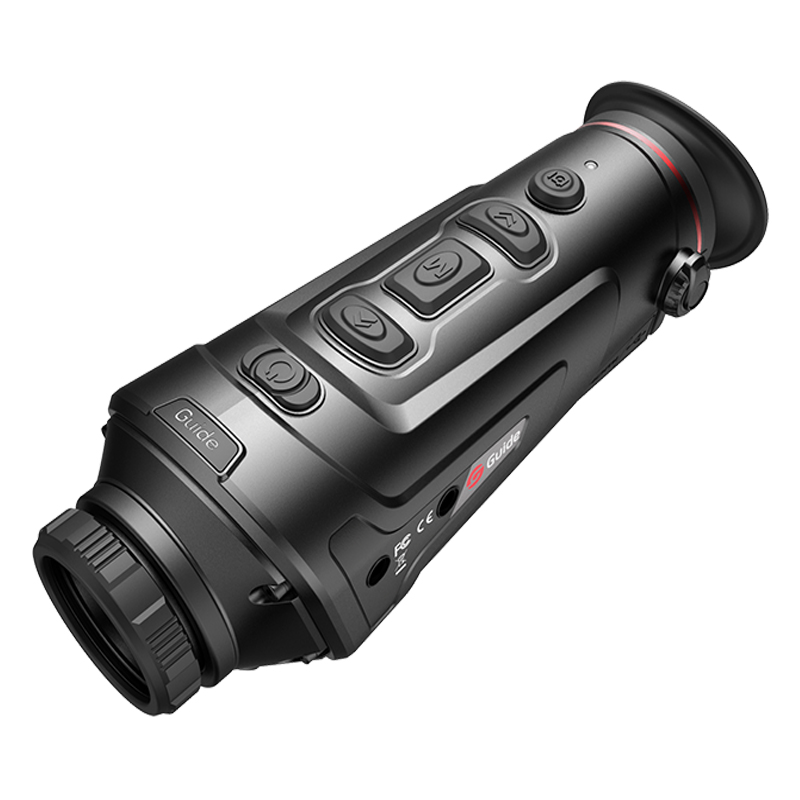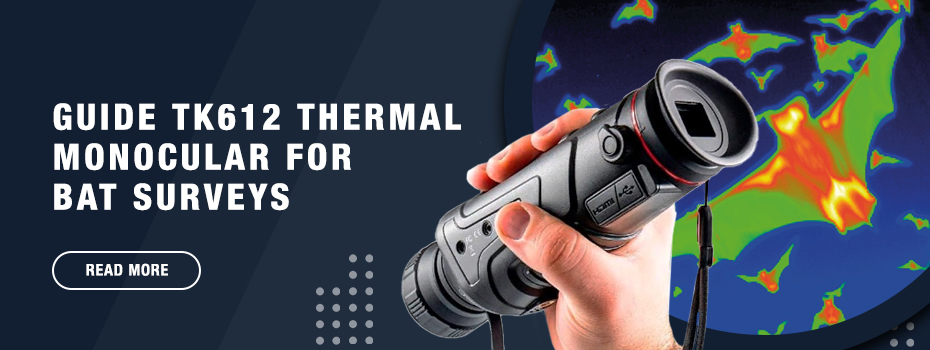
Bats are a UK- and European-protected species. As such, all UK bat species, roosts, and breeding sites are protected by both UK and European law. Therefore, it is illegal to disturb bats or damage, destroy, or obstruct bat resting, sheltering, and breeding locations. Committing any of these crimes can result in up to six months in prison and/or an unlimited fine.[1] Consequently, bat surveys have become a critical aspect of building and renovation projects. However, bats’ preference for roosting in difficult-to-access crevices, voids, and hollows combined with their nocturnal activities makes conducting meaningful surveys challenging. Thankfully, Guide has developed a TK612 Thermal Imaging Monocular specifically for ecological and conservation applications, such as bat surveys.
Quick Links
- Why Are Bat Surveys Important?
- Who is Responsible for Ensuring Bat Surveys?
- How Has Thermal Imaging Revolutionised Bat Surveying?
- Further Information
Why Are Bat Surveys Important?
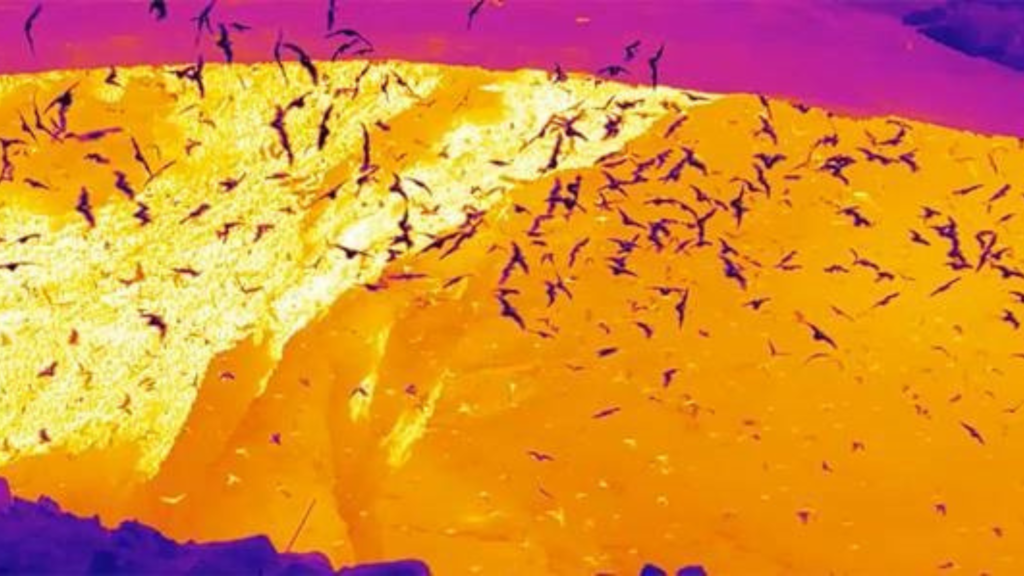
As previously mentioned, bats are a protected species; therefore, it is a criminal offence to harm bats or their habitats. Breaking these laws can result in a hefty fine and/or a prison sentence. Many human activities can cause disturbances to bats which may be detrimental to the species. For instance, female bats generally give birth to just one pup a year and will suckle them for a month to six weeks. During this maternity season, bats are extremely sensitive and may abandon their pups if disturbed. Unable to fend for themselves, the pups die, massively impacting the bat population.[2]
Activities that may affect bat colonies include:
- Re-roofing/ roof/chimney repairs
- Painting/replacing guttering, insulation, or boarding
- Adding firewalls
- Re-wiring and plumbing
- Timber treatment
- Pest control
- Re-pointing and grouting walls
- Removing plaster or wall cavities
- Replacing/repairing shingles, hanging tiles or weatherboarding
- Repairing/replacing/re-glazing doors and windows
- Lining and sub-dividing spaces, especially cellars and other underground areas
Historic England advises that conducting a bat survey before undertaking any of the above will not prevent or delay building or repair works from going ahead. It ensures bats are accommodated within plans and timescales. However, if work is initiated and bats are subsequently discovered, this could lead to long, expensive delays and potential prosecution.[3]
Who Is Responsible for Ensuring Bat Surveys?
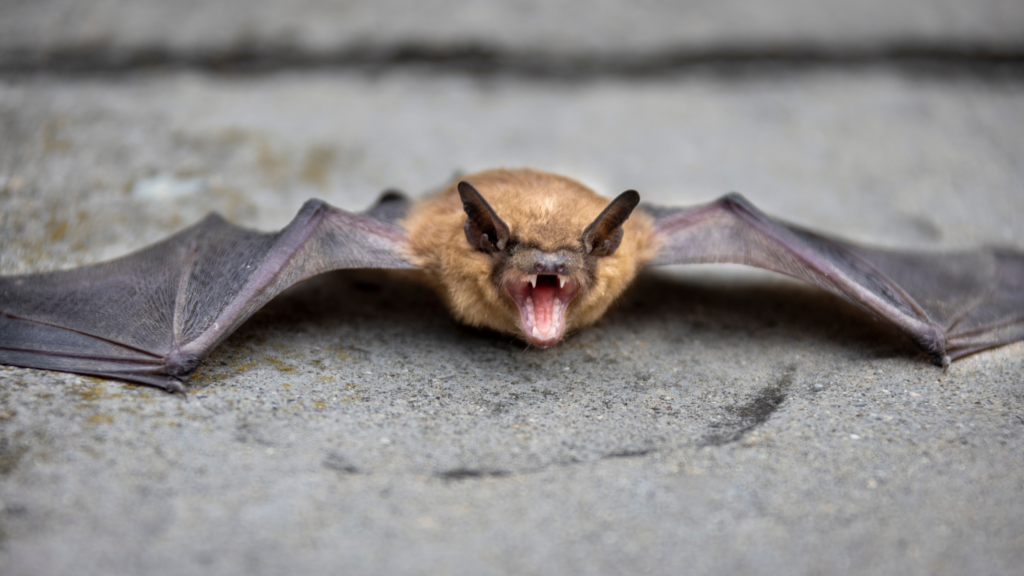
Bat surveys are often required as part of planning applications, especially if:
- Distribution and historical records indicate that bats may be present
- The proposal includes work on historic sites that involves the conversion, modification, restoration, or demolition of buildings that are:
- Traditional farm buildings with exposed wooden beams
- Weather-boarded or tile-hung and near woodland or water
- Pre-1960 detached buildings near woodland or water
- Pre-1914 buildings with gable ends, or slate roofs
- Adjacent to woodland or water
- Dutch barns and livestock buildings with a single-skin roof and boarding
- The development site offers roosting opportunities for bats such as trees and/or buildings and underground structures including tunnels, bridges, mines, kilns, industrial chimneys, ice-houses, military fortifications, air-raid shelters, and cellars
- The proposal includes floodlighting of buildings or green spaces near bat habitats, woodland, water, field hedgerows, or lines of trees connecting to woodland or water
- Felling, removal or lopping of woodland, hedgerows, old/veteran trees, and/or mature/dead trees is included as part of the proposal
- Proposals are close to water bodies, quarries, or natural cliff faces
- It is a windfarm proposal close to a site designated for bats or close to habitats that bats use for commuting or foraging
Therefore, anyone seeking planning permission has a responsibility to commission necessary bat surveys. Historic England also highlights that minor maintenance works can cause disturbances to bats and suggests seeking advice and commissioning a bat survey before beginning any developments.
Bat surveys must be performed by an ecologist with an appropriate bat licence and according to The Bat Conservation Trust’s Good Practice Guidelines. For proposals that may require a Bat Mitigation Licence, The Charted Institute of Ecology and Environmental Management (CIEEM) offers a searchable directory of bat specialist consultants.
Search the CIEEM for a Bat Specialist
However, for minor works to churches or homes that are unlikely to require a bat mitigation licence, The Bat Conservation Trust provides a service whereby a local, licensed, volunteer bat specialist will conduct an initial assessment and offer preliminary advice. [4]
Contact The Bat Conservation Trust
How Has Thermal Imaging Revolutionised Bat Surveying?
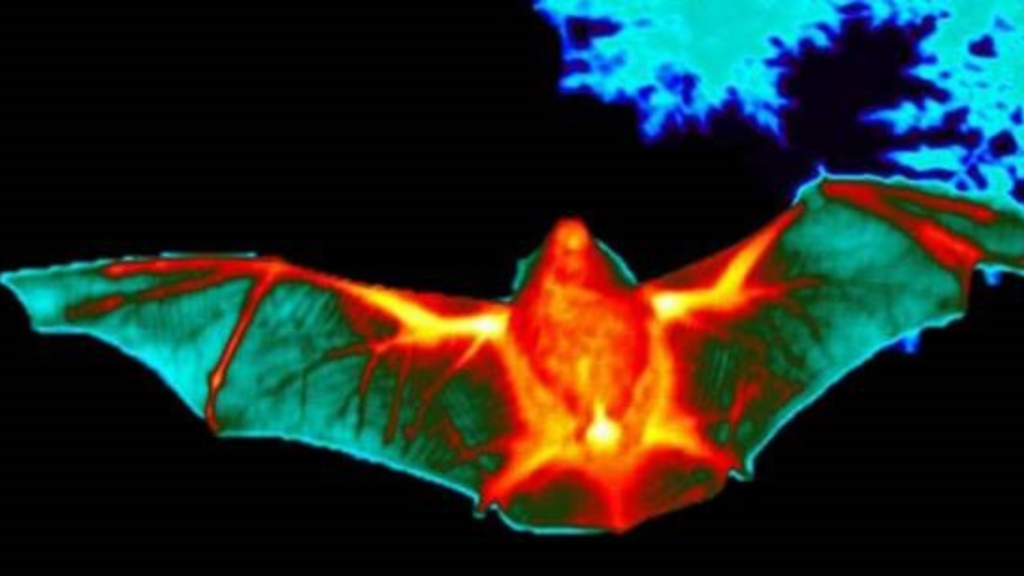
Initially developed for militaries, many industries have since adopted IR imaging as it offers an efficient and easy method of identifying and tracking targets that are tricky to see with the naked eye. Therefore, it is no surprise that thermal cameras are becoming increasingly prevalent within ecology and conservation. At PASS, we have highlighted several ecological uses for infrared imaging including red squirrel and tree conservation.
How IR Imaging is Helping to Save a Species
Infrared Imaging Cameras Used to Monitor Tree Health
Similarly, the NHBS reports that the Mid Wales Squirrel Partnership has deployed thermal cameras to monitor active red squirrel dreys. Likewise, the Forestry Commission uses infrared monitoring to track wild boar in the Forest of Dean. NHBS also offers examples of IR imaging being used to identify potential owl roosting locations; basking spots for invertebrates and reptiles; and insects that give off a distinctive heat signature such as queen wasps, bumblebees, or larger moths. This is because sensitive thermal cameras can distinguish between even slight differences in heat signatures across a landscape, including between tree species.
IR imaging cameras detect heat or thermal/infrared (IR) energy and map the intensity of this radiation across a scene. The hotter an object, the more IR energy it emits, the more intense its heat signature, and vice versa. Thermal colour palettes indicate the intensity of heat signatures across a scene, as the heat signature increases so does the colour intensity.
As infrared imaging does not rely on natural light, it is ideal for daytime and night-time applications. NHBS explains how this has proven useful when studying woodcocks and nightjars. Researchers use IR imaging cameras to locate the day-roosting birds and monitor their nocturnal activities without disturbing them. Suitability for monitoring nocturnal creatures also makes thermal imagers perfect for bat surveys. NHBS details how, while acoustic monitoring technology is used to determine bat species, infrared imaging provides an effective method of identifying potential roost sites and counting the number of individual bats present, especially in difficult-to-access areas. Thermal cameras drastically improve the ease and efficiency of locating and monitoring bats from a safe, convenient, and non-intrusive distance.[5]
Guide TK612 Ecology Thermal Imaging Monocular Overview
PASS has been working closely with licenced bat ecologist, Jean Oudney of Mytosis Bat Ecology, to provide the perfect thermal imaging solution for monitoring bats. Based in Blairgowrie, Perthshire Jean Oudney delivers talks on bats and beavers to local communities; rescues and rehabilitates injured bats across Tayside; and trains new volunteer bat carers. Importantly, she also carries out bat surveys.[6] As such, Jean Oudney required a infrared imaging camera with a wide field of view for surveying large buildings and spaces with difficult-to-access crevices, voids and hollows: areas perfect for bat roosts.
Happily, PASS, as a leading supplier of thermal imaging cameras, could provide an IR imager tailored exactly to Jean Oudney’s requirements. The Guide TK612 (Track 612) is a infrared imaging monocular optimised for ecology and conservation applications and, as such, offers a wide 44.3° x 33.1° field of view.
Guide TK612 Gen2 Thermal Imaging Monocular
- Wide-angle 10mm lens
- FOV: 44.3° x 33.1°
- IR Detector: 640 x 480px
- 30mK thermal sensitivity
- Patented image processing technology
- 3DNR
- PureIR adaptive filtering
- 8x smooth zoom
- Pseudo-colour adjustment
- Approximate ranging
- Built-in laser indicator
- Integrated illuminator
- Six colour palettes
- Three scene modes
- Outdoor lighting function
- Laser indicating function
- 0.4-inch, 1280x960px, full-colour display
- Adaptive LCOS eyepiece
- Differential buttons for easy operation
- IP66
- 1m drop tested
- Wi-Fi
- Compatible with Guide's TargetIR App
Buy Guide TK612 Thermal Monocular for Ecology & Conservation
Bat Ecologist Reviews Guide TK612 Thermal Imaging Monocular
“I already own a 19mm Guide Track 19 and although I am very happy with its quality, its narrow field of view is a real drawback when surveying buildings as you need to position it really far back to get the whole side of the building in the frame - which is often impossible. I love how much of the building I can now get in the new 10mm scope [Guide TK12) and the [below] photos show a comparison between the two using different colours that I did by positioning the scopes side by side looking at the same building.
~ Jean Oudney, Bat Ecologist, Mytosis Bat Ecology.
You can see the 19mm only gets the corner in whereas the 10mm gets almost the whole building in (please excuse the time difference, I forgot to put the clock forward on one of them). This will save so much time and money because I can use the wide angle to cover the same area that would need two cameras, and there is only one lot of footage to review - it's a game changer!”[7]
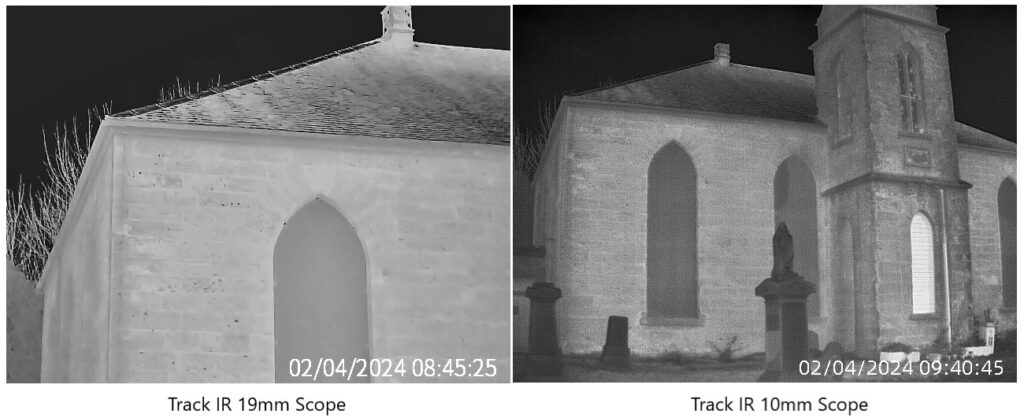
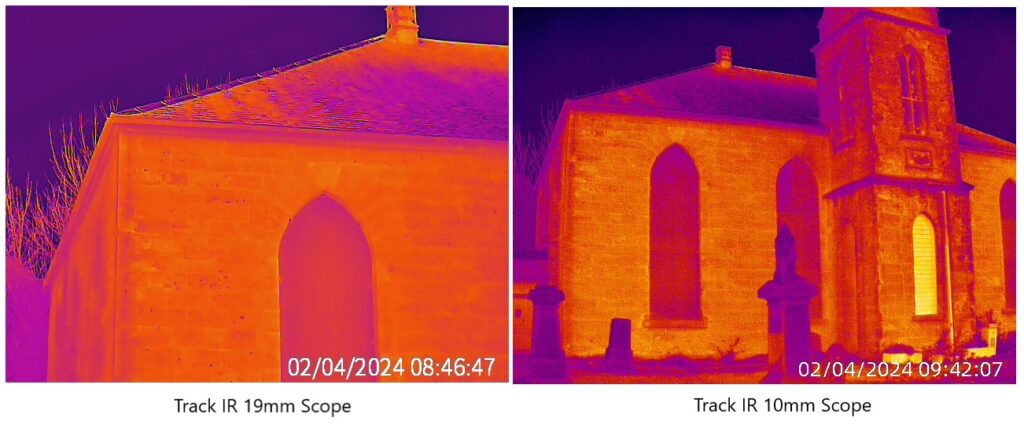
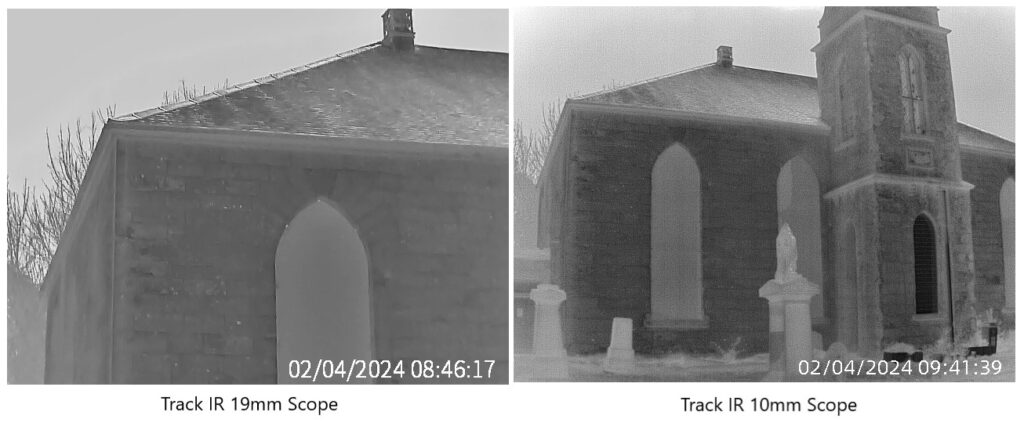
Further Information
Thermal imaging has revolutionised an array of ecological and conservation projects working to preserve natural habitats and protect species. However, numerous other sectors have also implemented infrared imaging to improve animal welfare. Check out the following articles for more information on how IR imaging can benefit farmers and animal rescue charities.
Thermal Cameras Help Locate Lovelorn Monkey
Thermal Cameras Used to Rescue Kittens
Catch Cattle Lameness with Economical Thermal Cameras
PASS Provides FLIR Thermal Cameras for Poultry Farmer's Enlightening Barn Ventilation Report
Discover More Uses for IR Imaging Cameras
For additional help or advice regarding our IR imaging cameras, including the Guide TK612, and their applications, contact our Sales team on 01642 931 329 or via our online form.
In the meantime, please browse our eclectic range of infrared imaging cameras.
Buy the Guide TK612 Gen2 Thermal Monocular
Browse Infrared Imaging Cameras
[1] GOV.UK, Bats: protection and licences, last accessed 10 May 2024.
[2] Chase Ecology Consultancy, Bats in the UK: The 2020 Complete Guide, last accessed 10 May 2024.
[3] Historic England, Bat Surveys, last accessed 10 May 2024.
[4] Historic England, Bat Surveys, and GOV.UK, Bats: advice for making planning decisions, last accessed 10 May 2024.
[5] Catherine Mitson, ‘Thermal Imaging for Ecologists’, NHBS Conservation Hub, last accessed 10 May 2024.
[6] Jean Oudney, Welcome to Myotis Bat Ecology & Tuition, last accessed 10 May 2024.
[7] Jean Oudney, LinkedIn Post, last accessed 10 May 2024.


